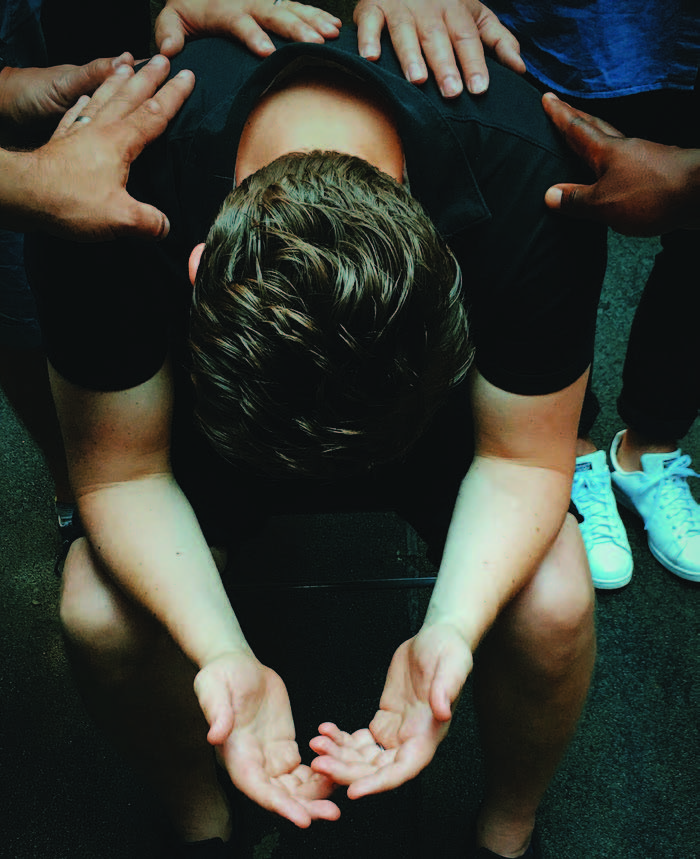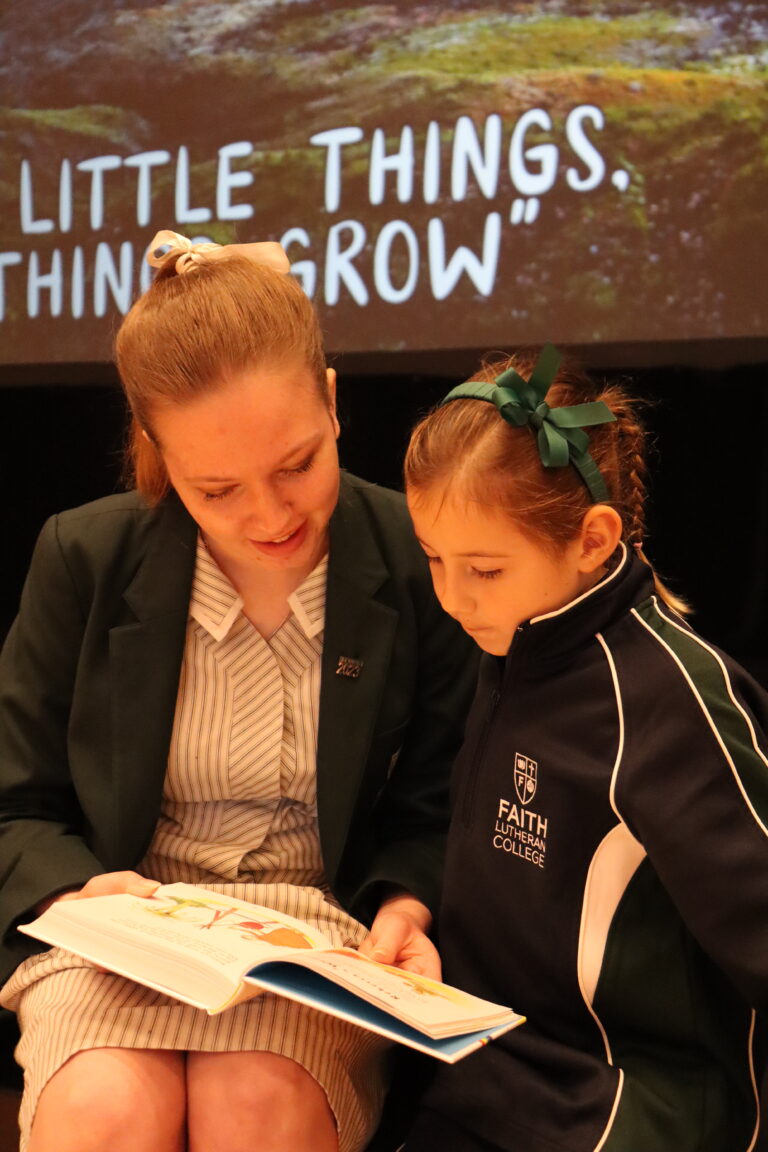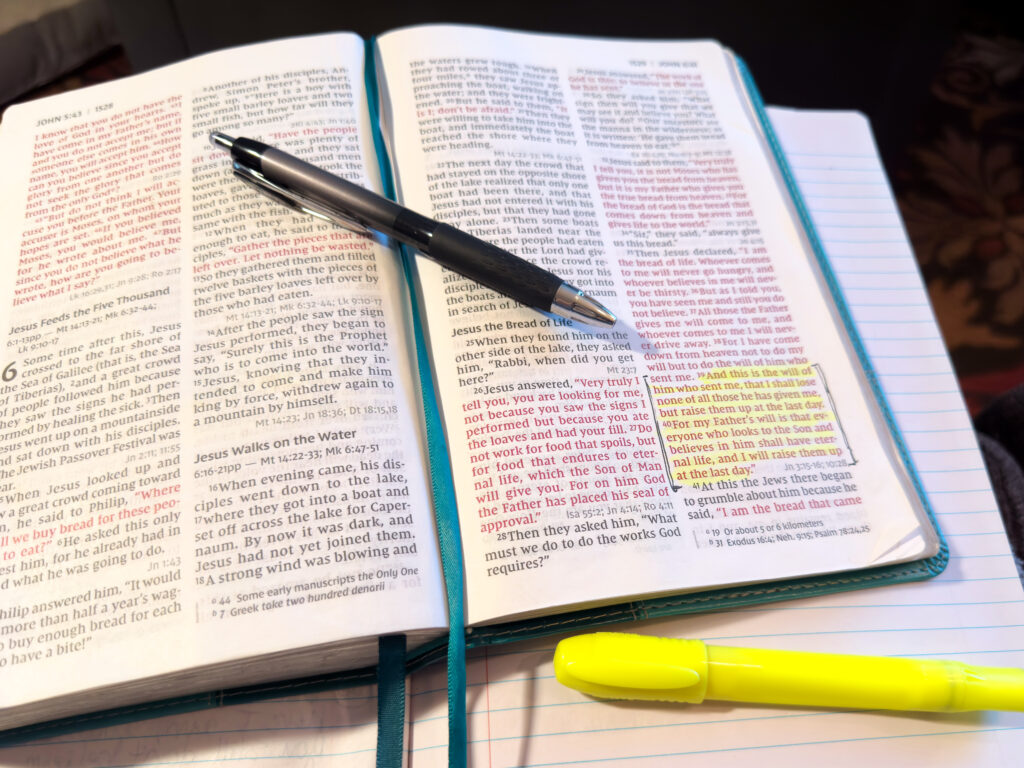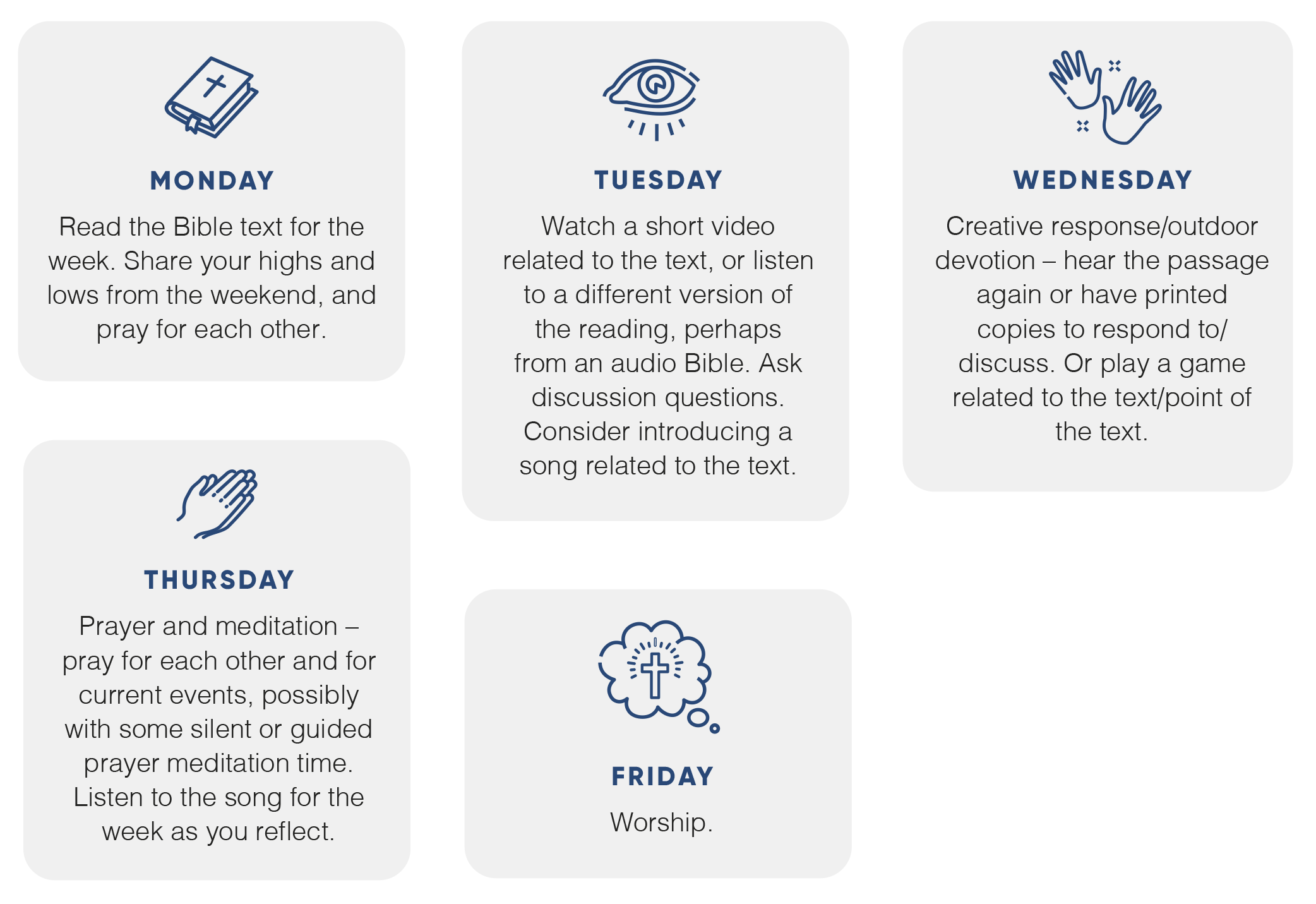Devotions in Secondary Schools
Devotions can be a powerful
and meaningful experience for
secondary school students, but
they should be tailored to match
the students’ age and stage.
This page looks at the needs
of this age group and provide
some ideas for organising
devotions in secondary school.

Ages and Stages of Faith Development
Young adolescents are involved in forming a personal identity, including a spiritual identity. They may even experiment with a range of different identities – trying them on for size and then discarding the ones that don’t work for them.
The middle years of high school can seem like an eternity. Heightened emotions, sexual exploration and uncertainty, a feeling that school will never be over and a general restlessness with the status quo can see students seriously questioning their beliefs and rejecting their parents’ teaching as they seek to establish their own identities. Although the middle teens can be challenging, they are often asking the right questions – who am I? Is there a plan for my life? Who really cares about me? Who can I trust?
As students move through secondary school and into the senior years, they face added pressures – assignments, exams, and the having to make decisions which will affect their future. Thinking about the future becomes more urgent and more terrifying at the same time. With increasing maturity and the end of school in sight, many senior students become much easier to relate to and are capable of great insight and spiritual understanding.
Adolescents often rely on peers to help them in this struggle. They may be very tuned in to the expectations and judgments of the group and happy to adopt the group ideology rather than have a belief of their own. They may go along with the pack, even when it goes against a previously held position. Parents and teachers fear that the young person will become overly dependent on a pack with far different values from their own.
But despite appearances, teenagers do take note of our opinions, particularly the opinions we demonstrate by our actions as well as our words. Our beliefs and values are important to them. However, it’s best to express these in open and respectful ways, and to listen to the young person’s perspective as well.
Talk with your students about God’s loving presence in all things (Romans 8:28). Speak about God as someone who loves and accepts them, someone who understands, is loyal and cares for them at times of crisis. God may be a close friend and ‘knowable.’

Young people tend to accept the faith system of the community around them, and are not particularly interested in analysing these beliefs. What faith system, if any, surrounds your students?
Devotions in Secondary School
It can be challenging to engage young people in authentic, meaningful devotions. These ideas may help:
- The application of Bible texts becomes increasingly important, as students need to hear how the passages they are hearing relate to their lives. Allow time for students to express their thoughts and feelings in response to the text.
- Devotions need to be Biblical (not moralistic life lessons) and authentic. Let God’s Word speak to each student.
- Bear in mind that not all students will come from Christian families, and many may not come from homes where they heard Bible stories as children. Don’t assume that everyone is familiar with Bible stories or faith language. If you have a very diverse group of students, it might be helpful to reexamine the core Bible stories, approaching them from a more adult perspective. Even students who have been in church and at Lutheran schools all their lives may not have considered the full implications of the David and Goliath story and how it might relate to their lives, for example.


- Students are becoming more aware of their own failings, Devotions can be a place where this is acknowledged
and they are shown the way to let go of anything that is bothering them and seek comfort and reassurance. It is worth considering teaching them about restoration and reconciliation and modelling confession and absolution. While no one should be compelled to confess what they don’t believe, opportunities for prayer and silent confession can be powerful and offer great comfort. It is important to exercise caution around personal confession out loud – vulnerable teenagers can sometimes overshare without thinking about the consequences about revealing sensitive issues to their peers. - Similarly, the psalms are full of the emotions that teenagers and adults often experience and struggle with, and they can be an impactful way of helping young people to realise that it is alright to feel those emotions and express them to God. It is worth considering some meditative practices from time to time such as listening to a psalm set to music or looking at images while the psalm is being read aloud.
- Don’t forget to have fun! Being a teenager can be stressful, and playing active games which reinforce the message of a passage or turning a great worship song up to 11 can release the pressure and remind students that you don’t have to be serious and joyless to be a Christian.
- Getting outside and away from technology for a while can also be beneficial. Prayer walks, labyrinths and small group discussions outdoors can be relaxing and help students engage.
- Getting creative is a great outlet and a way for students to connect to the Word. Consider offering some creative journalling/creative response time, or giving musical students the opportunity to write or play a piece of music in response to the text.
- Nostalgia can be very appealing to older students. Occasionally singing a fun Scripture song from when they were little or watching a Bible story video clip they loved when they were in primary school can be very appealing to senior school students, especially around high-pressure times like exams. Ask them to choose what they’d like.
- If you are in a Foundation-Year 12 school, consider adopting a buddy class from the younger year levels, and sharing devotions with the younger students once a week. Sometimes students will be willing to engage more
if they are the leaders or are having fun relating to younger students. Part of the week’s devotion time could be spent planning how you will teach your buddy class. Big kids might like to be taught by little kids from time to time as well.

Sacred spaces


Rituals and routine
While adolescents are often open to change and variety, having some familiar patterns/rites can also provide some much-needed structure and comfort.
This could include simple routine acts such as lighting candles or the use of common prayers, such as the Lord’s Prayer, or forms for worship (liturgy) like the invocation or blessing . That said, try to not settle into a rut. Many of these young people have been attending school worship and class devotions for more than five years, and they may not appreciate the same devotion style over and over again.
Involving students in devotions
- Student voice is really important. Look for opportunities to involve them at all stages in your devotion preparations. Ask students what topics they’d like to explore, or what kinds of devotions they have enjoyed in the past.
- Secondary students are capable and may engage more with devotions if they feel some ownership over them or feel they have a role to play. Having a selection of resources for them to choose from and a simple pattern they can follow means that students can lead a lot of the morning devotions, with a little guidance from the teacher to keep everyone on track.
- Some students may enjoy the simple ritual of setting up the altar space and lighting the candles. Look for the students in the group who might like to be involved in this way. Students who are shy or unfamiliar with the Christian faith can still participate in these quiet rituals which may make them feel included and welcome.
- Students may enjoy choosing the music for devotions. Be prepared to vet their choices!

Planning Devotions
Simple and regular is more important than elaborate and time-consuming with devotions. Usually devotions will include:

Inviting God to be with us (invocation) ‘In the name of the father and the Son and the Holy Spirit’

A Bible story and possible a short discussion/ question time

Prayers

A song

Blessing

Here are some thoughts for how you could plan your devotions:
- Check with your school pastor/chaplain/worship coordinator whether there is a whole school devotion plan or resources that they already have. Some schools might have a plan of which Bible stories to teach already in place.
- If you aren’t very experienced with devotions, you might like to ask another staff member to partner with you. See if you can watch them in action or ask them to help you practice.
You don’t have to be perfect! God is doing his work in the students just by your care group gathering in his name and listening to him. - Talk to the Christian Studies teacher or look at the LIFE/ Christian Studies curriculum for your age group. There is a
list of Bible stories/passages which teach the concepts about God that the students are learning. Exploring these texts in devotional time may help reinforce students’ understanding. This will only work if all students are in year-level home groups – they won’t be suitable for vertical pastoral care groups (mixed ages). See the Christian Studies Curriculum Framework . - Once you’ve chosen your Bible story/passage, decide how you will share it with the students. There are many ways to explore a Bible text. Think about what the story tells us about God or how it points to Jesus.
- Gather your resources and choose a song to match the story if you can. If you can’t find a song that exactly relates to the story, either have the students choose from a selection of familiar songs.
- Gather your resources and choose a song to match the story if you can. If you can’t find a song that exactly relates to the story, either have the students choose from a selection of familiar songs.
Here’s a simple weekly pattern you could adapt to suit your group:

Devotion Order
Here is an editable template for those wishing to write their own devotions or to display in the classroom so students can help lead.


